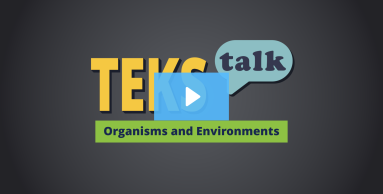
Knowledge and Skills Statement
Have students create a triple venn diagram. They should label the circles "food", "water", and "air". Provide the students various cards which have pictures of animal structures and/or text explaining animal behaviors. For example, one card might have a picture of an elephant using its trunk to drink water. Another card might have a description of a cat that is crouched down, stalking its prey. Have students work with a partner to select a card and explain the connection to food, water, or air. Once they find a connection, students will place the card into one of the three categories on the triple Venn diagram (food, water, or air). For example, an elephant's truck helps it get water and breathe. Students could place the elephant card in the section of the triple Venn diagram where air and water overlap. The description of the cat stalking its prey would fit in the food section of the Venn diagram. Once the cards are sorted, students should analyze each category and find similarities and differences between the cards in each category or set of shared categories.
Research
Sinoradzki, Kristen, and TJ McKenna. “What’s so Phenomenal About Animals? Using Structure and Function to Explore Animal Diversity.” Science and Children 58, no. 6 (2021): 86–90. www.nsta.org/science-and-children/science-and-children-julyaugust-2021-0/whats-so-phenomenal-about-animals.
Summary: This article explains that allowing students to explore animal diversity and the different structures that will enable them to survive can help increase student engagement. Discussions about this topic can help promote a broader vocabulary.
